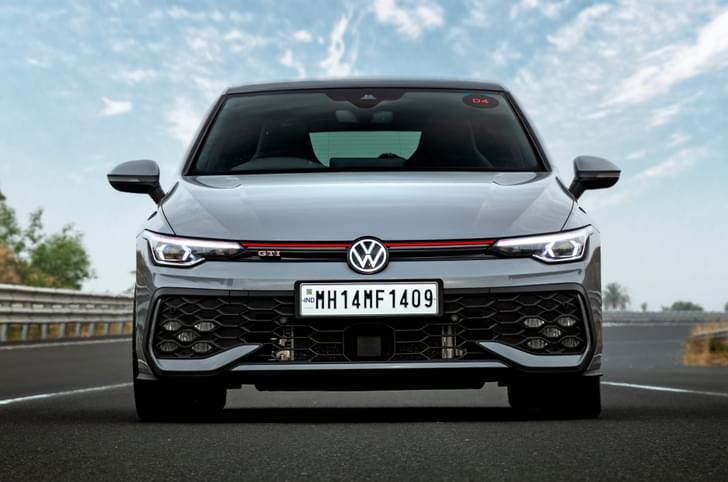Volkswagen is all set to make its most committed assault on the Indian market yet. Finally out of hibernation and up for a fight, Germany’s most successful car maker is leaving no stone unturned. At stake is not only the successful launch of the Taigun, but also the continuing growth of the brand in India. But can VW, with its higher cost structure and elevated quality levels, match rivals when it comes to specifications, features, size and price? Let’s put the Taigun under the microscope.
Anti-Ageing Formula
First up, the design, which as expected, is clinical, understated and anything but in your face. Designed by the elimination of the superfluous, VW’s long-held anti-ageing formula, the Taigun is a conventional-looking SUV. And that, as far as Indian car buyers are concerned, is a good thing. But it’s also clearly a VW, so it’s no big surprise that the nose looks similar to its larger sister, the Tiguan. This is especially true head on, where the square bonnet
and cliff-like nose follow the same template. The high-mounted headlights merge seamlessly with grille, horizontal lines run across to accentuate the width and, for India, there’s plenty of bling up front. Must say, the tiny chrome ‘wedges’ on the grille do catch the light nicely.
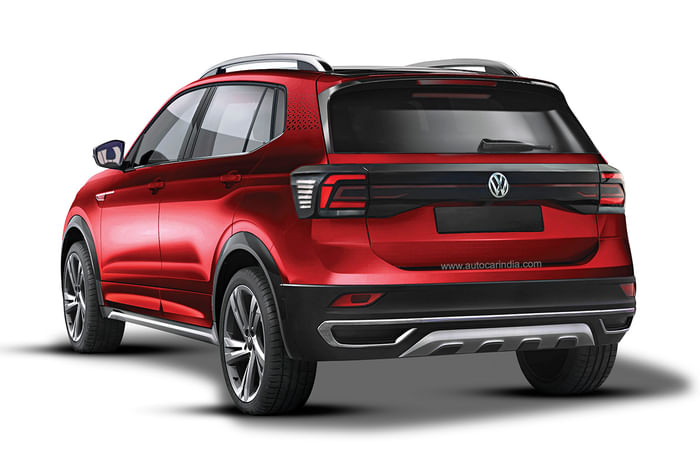
The area below the chin is more intricate. A stylised ‘bull bar’ runs across the bumper and curls back around the fog lights. There’s plenty of matte black cladding around the chin and it even gets the ubiquitous faux skid plate. Question is, will VW’s clinically designed nose draw enough attention, especially in light of flashier competition?
Around the side, the high bonnet, upright cabin and strong shoulder line, all work well. The nose is a bit stubby but since the wheels are the right size, the Taigun looks like a proper SUV. The shoulder line and waist are also nicely chiselled and there are some creases that catch the light at the bottom of the doors too.
The chunky nature of the design also stands out when you view the car from the rear. The wide base, with plenty of ‘weight’ in the bottom, sets the tone and the interlinked tail-lights help give it some individual character.
Space Station
At 4.2 metres long the Taigun isn’t very big on the outside, but space on the inside is more than sufficient. Built on a larger wheelbase than either the Creta or Seltos, VW has also made sitting in the back more pleasant by using a higher seating position. So, not only is there plenty of legroom at the rear, there’s also space to put your feet under the front seats. Even the height of the central tunnel has been lowered, and the flatter floor helps give you a greater feeling of space.
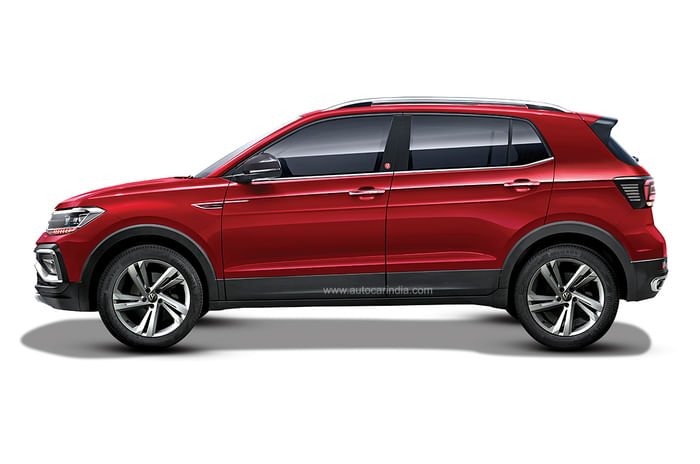
The higher-spec versions will get powered front seats, and with the high seating position, visibility will be good as well. The Taigun also gets a multi-layered dash. The large, 10-inch touchscreen on the centre console gets pride of place, and what should also delight Indian car buyers is the fully configurable digital instrument screen. Like Audi‘s Virtual Cockpit, this one can be configured to display a map, reams of driving information, traditional dials or a combination of the three. As we’ve seen on other VW SUVs, the screen is super-sharp, bright even in direct sunlight and so fluid, they look almost like physical dials.
The Taigun will also get VW’s new, high-quality flat-bottom steering wheel. Not sure the body-coloured interiors will be to everyone’s taste, though, especially the brighter shades.
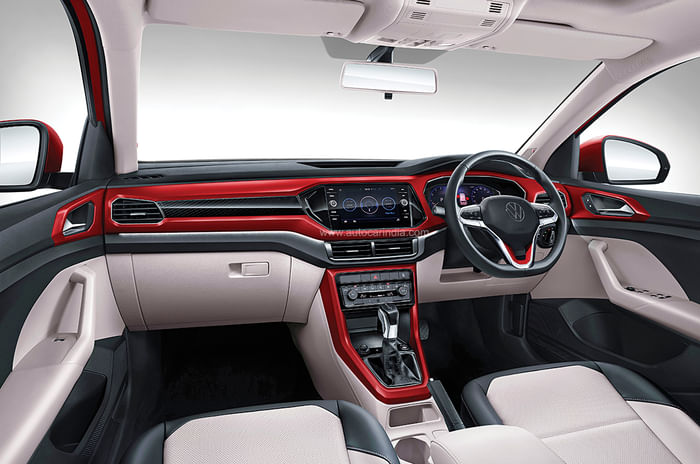
Equipment is important, and will include a panoramic sunroof, leather seats, six airbags, Electronic Stability Control (ESC), wireless charging and connected-car tech. Cooled seats, however, will get a miss.
Versions of this SUV in other markets also get features like a 300-watt, eight-channel Beats Audio sound system, active lane-keeping assist, radar-based cruise control and a degree of autonomous driving. So, the potential for VW to lead with features is there as well.
At 330 litres, boot space isn’t massive, but the boot is wide and looks deep enough to hold two large bags or three strollers.
High-Tech Engines
Under the hood, the Taigun will get two petrol engines. The mainstay will be a more powerful version of the 1.0-litre TSI that powers the Vento and Polo. Expected to put out approximately 115hp (up from 110hp), this version will come with six-speed manual and six-speed torque converter automatic options.
While VW’s small-capacity three-cylinder engine may not seem impressive at first glance, it is similar in output to Hyundai’s naturally aspirated 1.5 petrol that powers the Creta. VW’s 1.0, however, has a clear advantage when it comes to torque, making 200Nm versus the Creta 1.5’s 144Nm.
The more powerful engine for the Taigun will be the 150hp, 1.5-litre TSI, which also has a 10hp advantage over Hyundai’s 1.4 turbo. Top-end versions of this SUV will come with a DSG twin-clutch automatic gearbox, and from what we’ve seen on VW’s T-Roc, you can expect strong performance and quick shifts. There will be no diesel engine, however – a fallout of VW’s ‘Dieselgate’ emissions scandal. This will mean buyers who only want a diesel will have to look elsewhere.
Worth Waiting For
The Taigun, expected to be launched toward the middle of 2021, promises a lot. Likely to be spacious, comfortable, well equipped and well specified, with a pair of powerful engines to boot, it has a lot going for it. It may not be the largest SUV in its class when it comes to overall length and there will be no diesel, but priced competitively, somewhere in the Rs 10-18 lakh (ex-showroom) bracket, the Taigun has a good shot at being the most desirable VW sold here yet.
MQB A0 IN: Indi thinking
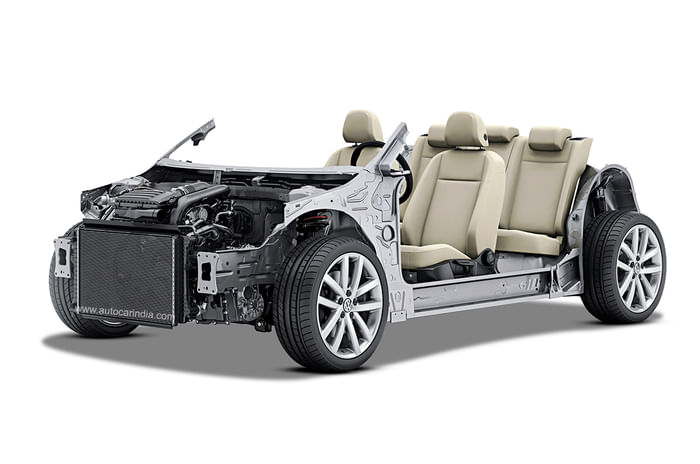
The Taigun will be built on the Volkswagen Group’s famous MQB platform. Widely considered to be one of the best automotive architectures around, it is a platform that underpins several VW Group cars like the Golf, Tiguan, Superb and even the new Q3. The Taigun will be built on a localised version of the platform, know internally as the MQB A0 IN, and will also be used by its sister SUV from Skoda that will be launched first. The Taigun is based on the European T-Cross and a long-wheelbase version that is sold in China. While it isn’t the longest car in its class, at 4,218mm, it is built on a long 2,651mm wheelbase. This means it has plenty of space for passengers between its wheels. In addition, the large rear doors make for easy ingress and egress, and to help deal with our poor roads, VW has given it generous ground clearance of 205mm. The Taigun will also have a stiffer anti-roll bar to better stabilise the taller suspension, it will get a shallower central tunnel for greater passenger space in the back, and VW could also use a lower-spec steering system and lower-spec seats to save on cost. The key to delivering what should be a higher-quality SUV at a more affordable price, however, is greater localisation, and VW is looking at eventually attaining upwards of 90 percent.























